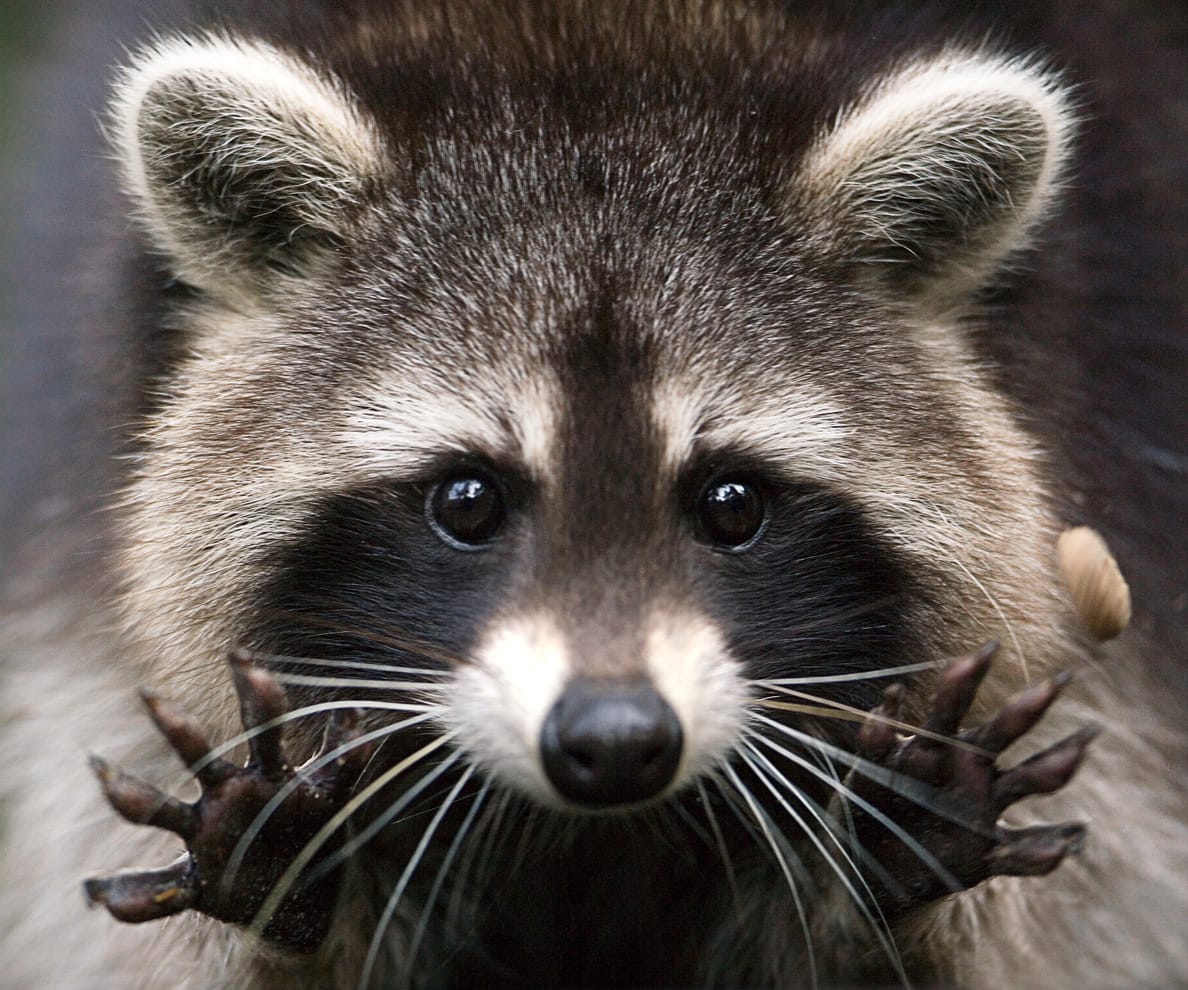Decoding Raccoon Behavior: Do They Have Rabies?
Raccoons, those masked bandits of the animal kingdom, often spark curiosity and concern, especially when it comes to the risk of rabies. While not every raccoon carries this deadly virus, they are a primary carrier in North America, with approximately 35% testing positive for rabies, according to the CDC.
Understanding the signs of rabies in raccoons and knowing how to stay safe is crucial for anyone living in areas where these creatures roam.
How Likely Is a Raccoon to Have Rabies?
The likelihood of encountering a rabid raccoon varies depending on your location and the time of year. However, the CDC’s statistic of 35% of tested raccoons being positive for rabies highlights the significant prevalence of the virus within this species.
It’s important to remember that this data likely reflects raccoons exhibiting unusual behavior, prompting testing. The actual percentage of all raccoons carrying rabies is difficult to determine, as many infected animals may not display symptoms.
While not all raccoons carry rabies, even a seemingly healthy raccoon can transmit the virus through saliva, making any bite a serious health risk.
What Happens if a Raccoon Bites You?
A raccoon bite is a serious matter, demanding immediate attention. Beyond the immediate pain and trauma, there are two primary health concerns: rabies and bacterial infection.
1. Rabies: A Viral Threat
- What is rabies? A deadly viral infection that attacks the central nervous system. Without prompt treatment, it’s almost always fatal in humans.
- Transmission: Typically through the saliva of infected animals, usually via bites, but scratches can also transmit the virus if saliva is present.
- Symptoms: Can take weeks or months to appear; include fever, headache, muscle weakness, confusion, hallucinations, difficulty swallowing, and excessive salivation.
2. Bacterial Infections: A Hidden Danger
- Source: Raccoon mouths harbor various bacteria that can cause infection.
- Common Types: Staphylococcus, Streptococcus, and Pasteurella.
- Signs of Infection: Redness, swelling, warmth, pus drainage, fever, and swollen lymph nodes.
What to Do After a Raccoon Bite:
Immediate Action:
- Control bleeding: Apply pressure with a clean cloth.
- Wash the wound thoroughly: Use soap and water for at least 20 minutes.
- Disinfect the wound: Apply an antiseptic solution.
- Seek immediate medical attention!
Medical Evaluation:
- Rabies Risk Assessment: Your doctor will consider factors like the location of the bite, the animal’s behavior, and local rabies prevalence.
- Post-Exposure Prophylaxis (PEP): A series of vaccinations highly effective in preventing rabies if administered soon after exposure.
- Antibiotics: May be prescribed to prevent or treat bacterial infections.
- Tetanus Booster: May be recommended.
How Do You Know if a Raccoon Is Rabid?
Spotting a rabid raccoon isn’t always straightforward. While some exhibit classic signs like foaming at the mouth, others might show subtle behavioral changes.
Knowing the signs of a rabid raccoon, such as unprovoked aggression and disorientation, is crucial for avoiding potentially dangerous encounters. Here’s what to look out for:
1. Behavioral Changes:
- Aggression: Unprovoked attacks, appearing agitated or easily startled, self-mutilation.
- Disorientation: Stumbling, walking in circles, appearing dazed or confused.
- Daytime Activity: Raccoons are nocturnal; seeing them out during the day can be a red flag.
- Fearlessness: Approaching humans or pets without caution, lacking typical fear responses.
2. Physical Symptoms:
- Paralysis: Often affecting the hind legs, leading to difficulty walking.
- Excessive Drooling or Foaming: Due to paralysis of the throat muscles, making swallowing difficult.
- Wounds or Injuries: May be present from fighting or self-mutilation.
- Changes in Vocalization: Hoarse barking, whimpering, or unusual noises.
Remember: You never want to get close enough to a raccoon to observe these symptoms up close. If you encounter a raccoon acting strangely, keep your distance and call your local animal control or health department immediately.
Rabies vs. Distemper: Knowing the Difference
Distemper, another serious disease affecting raccoons, can sometimes be mistaken for rabies due to shared symptoms. Here’s a key difference:
- Distemper: Often causes crusty eyes and nose, along with severe diarrhea.
- Rabies: Typically does not present with respiratory or digestive symptoms.
Misidentifying these diseases can have serious consequences. If you suspect a raccoon might be sick, contact animal control for professional assessment.
Protecting Yourself and Your Pets from Raccoon Rabies
Prevention is always the best strategy. Here’s how to minimize the risk of raccoon encounters and potential rabies exposure:
- Avoid Contact: Do not approach, feed, or touch raccoons, especially if they appear sick or behave unusually.
- Secure Trash: Use animal-proof garbage cans and keep garbage areas clean.
- Remove Attractants: Don’t leave pet food outside, and eliminate sources of water that might attract raccoons.
- Vaccinate Pets: Ensure your pets are up to date on their rabies vaccinations.
- Educate Children: Teach children about the dangers of interacting with wild animals and how to respond if they encounter a raccoon.
The Future of Rabies Control: Eradication Efforts
Scientists are working hard to combat rabies in wildlife, including raccoons. Oral rabies vaccination (ORV) programs involve distributing baits laced with vaccine to reach wild populations.
One such program, highlighted in National Geographic, aims to make North America rabies-free by 2053. These efforts provide hope for a future where encounters with these masked creatures won’t carry the risk of this deadly disease.
By understanding raccoon behavior, recognizing the signs of rabies, and taking preventive measures, you can enjoy the natural world while minimizing risks to yourself and your family.
Don’t forget: Do you want to know do raccoons hibernate? You may be surprised to know that these animals go through the winter like bears. Also, the different breeds of wasps that you will see in your backyard are paper wasps, yellow jackets, and hornets. Wasps are beneficial insects, but they can also be a nuisance.
- Revolution Space: Disruptive Ion Propulsion Transforming Satellites - April 24, 2025
- Race Through Space: Fun Family Game for Kids - April 24, 2025
- Unlocking the Universe: reading about stars 6th grade Guide - April 24, 2025

















2 thoughts on “Understanding Raccoon Rabies: Signs, Risks, and Staying Safe”
Comments are closed.